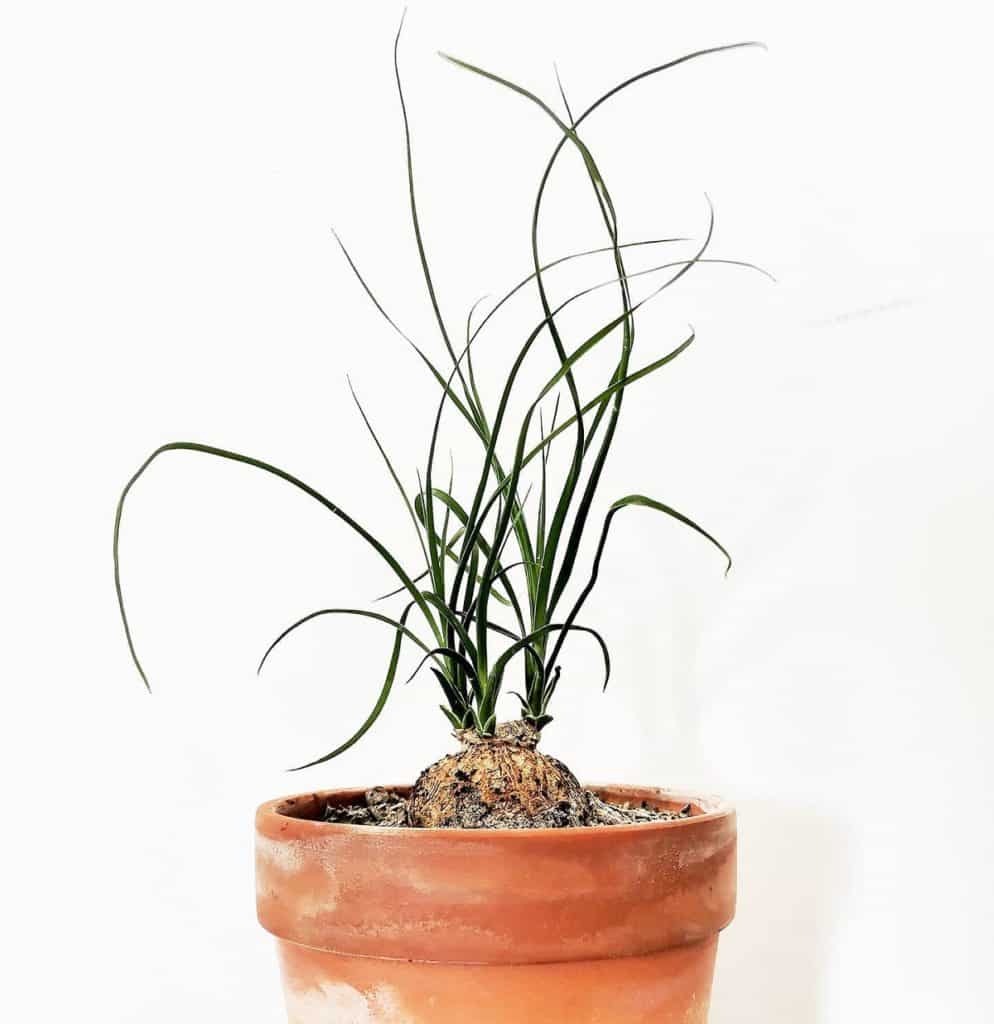A Guide to Growing the Remarkable Albuca Augrabies Hills Indoors
Have you ever come across a plant so stunning, it instantly grabs your attention? Meet Albuca Augrabies Hills – a true showstopper with elegant white and green striped flowers that emit the most delightful sweet scent. This rare South African beauty will captivate you with its thin, smooth leaves and exposed bulb. And the best part? You can easily grow it right in your home! Keep reading to discover the secrets to nurturing this remarkable indoor plant.

Contents
About Albuca Augrabies Hills
Native to the semi-arid Kalahari region of South Africa, Albuca Augrabies Hills belongs to the Asparagaceae family. Despite its exotic origins, it adapts brilliantly to indoor environments, making it the perfect houseplant for green thumbs of all levels. With its eye-catching blooms and low-maintenance care, this stunner is sure to become the talk of your home!
Related Post:
1,000 Types of Succulents With Pictures
How to Care for Albuca Augrabies Hills
Light Requirements
Albuca loves bright, indirect sunlight. Place it near a sunny window, but be careful of scorching afternoon rays. If you lack natural light, no worries! A simple grow light can do the trick. Position the light 6-12 inches above the plant and keep it on for 12-16 hours daily. Proper lighting ensures your Albuca stays lush and vibrant.
Water Wisdom
This plant is a desert native, so it prefers drier conditions. Water thoroughly, but allow the soil to partially dry between waterings. During the growing season (spring and summer), aim to water every 1-2 weeks. In winter, you can cut back to once a month. The key is never letting the soil stay soggy, as this can lead to rot.
Soil Secrets
Albuca thrives in well-draining, nutrient-rich soil. A perfect mix combines equal parts potting mix, perlite or sand (for drainage), and compost or aged manure (for nutrients). This magical blend provides the ideal environment for your plant’s exposed bulb and roots to flourish.

Fertilizer Frenzy
To keep your Albuca in tip-top shape, feed it a balanced, water-soluble fertilizer every 4-6 weeks during the growing season. An organic option like fish emulsion or seaweed extract works wonderfully. No need to fertilize in winter when growth slows down.
Temperature and Humidity
This tough plant can handle average household temperatures between 65-85°F. It also doesn’t mind drier air, so no need for extra humidity. Just avoid cold drafts and frosty spots, as Albuca cannot tolerate freezing temps.
Pests and Problems
Albuca is remarkably resilient and rarely faces serious pest issues. However, keep an eye out for spider mites (treat with insecticidal soap) or snails (hand-pick them off). Overwatering poses the biggest threat, leading to root rot or fungal diseases, so be cautious with your watering can!

Pruning Pointers
Pruning this low-maintenance plant is a breeze. Simply snip off any yellowed or damaged leaves as needed with clean scissors. Once the blooms have faded, you can also trim the flower stalks for a neater appearance.
Potting and Repotting
Albuca is happiest when just a tad rootbound, so only upsize the pot every 2-3 years. Choose a container with drainage holes and ensure the bulb sits just below the soil surface. When repotting, gently loosen the rootball and replant in fresh, well-draining soil mix.
Albuca Augrabies Hills Propagation Methods
Albuca Augrabies Hills can be easily propagated through division, offsets, or seeds. Each method has its own advantages, so choose the one that best suits your needs and experience level.
Propagating by Division
Timing is critical when dividing Albuca Augrabies Hills. The best period is late summer or autumn during the plant’s dormant phase. Ensure the parent plant has matured enough, with multiple shoots indicating it’s ready for division.
- Prepare by gathering gloves, a sharp knife, and fresh potting mix
- Remove the plant from its pot and inspect the root ball
- Look for natural divisions and gently tease them apart, using a knife if needed
- Make sure each division has both roots and shoots attached
- Plant the divisions in their own containers with well-draining soil at the same depth as before
- Water regularly to maintain consistent moisture, but avoid oversaturating the soil
- Position the new plants in bright, indirect light
- Hold off on fertilizing until new growth appears, then feed with a balanced fertilizer
Growing from Offsets
To spot a mature offset ready for harvesting, look for a mini version of the plant with its own roots. It should be plump, signaling it’s ready to separate from the mother plant.
- Gently separate the offsets from the parent bulb with a clean knife or by twisting
- Allow any wounds to dry for a day before planting
- Plant the offsets in a well-draining soil mix at the proper depth
- Water sparingly initially to avoid oversaturating the young plants
- Provide bright, indirect light to prevent sunburn
- Adjust care as the offsets establish and show new growth
Starting from Seed
Harvesting Albuca Augrabies Hills seeds requires timing – wait for seed pods to fully dry on the plant before collecting. Gently remove seeds, avoiding damage.
- Use a well-draining seed starting mix
- Sprinkle seeds on the surface and lightly press into the soil (no deep burying)
- Keep soil lightly moist but not soggy
- Situate in a warm spot with indirect sunlight until germination in 1-2 weeks
- Once seedlings appear, avoid direct sun to prevent scorching
- Allow the top inch of soil to dry between waterings
- Provide a succulent-friendly, well-draining potting mix
- Maintain moderate temps and average humidity
- Feed with a diluted liquid fertilizer during spring/summer growth spurts
- Prune any unsightly leaves to keep plants tidy
- Watch carefully for pests and treat promptly if they appear
With a little time and care, you’ll soon have a flourishing collection of these exquisite striped lilies!
